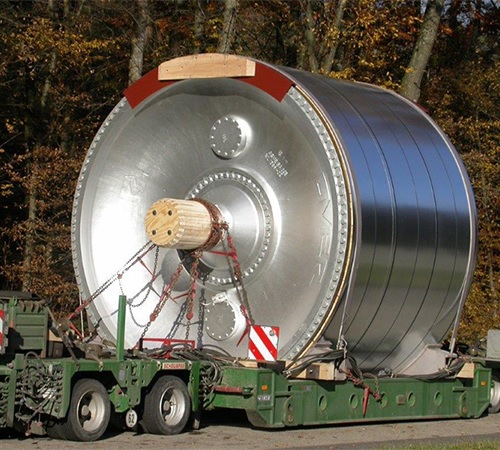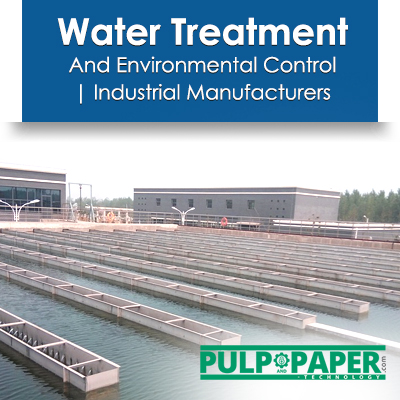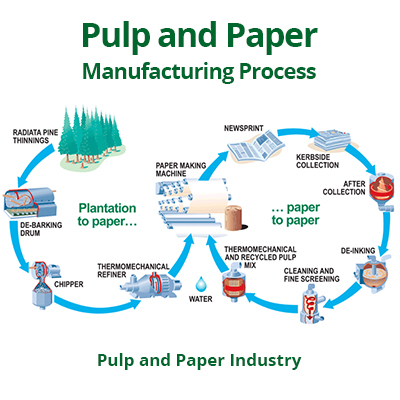Machinery Used In Tissue Paper Making

In paper business, the word "tissue" includes all paper products used for sanitary and hygienic purposes both at home and/or in public places. The tissue papermaking is a financially and feasible viable project as it has huge returns and few investments. The set up of the tissue paper making manufacturing unit can be small-scale or large-scale business. An individual can start a tissue paper making business with little investment and can develop the structure whenever he wants. As the use of paper is increasing rapidly, it's a new revolution in the paper industry. More than 5 billion people are supplied paper worldwide by the pulp and paper industry. Initially, pulp and paper making was a slow and labor-intensive process, but today the high-tech and high-speed paper machines and capital-intensive equipment drive these processes. More than 400 million tons of paper are produced every year around the world. Paper is used for several purposes. Many countries have banned poly bags and are accepting the paper as a substitute. Toilet rolls, tissue papers, paper towels, facial towels, and much more are being quite easily accepted by the world, and hence this is shaping up the paper industry and providing employment to many people.
According to a specific application inside a market segment, the hygienic tissue paper products are manufactured to meet the desired performance. The most important properties used to evaluate the performance of tissue products are - softness, water absorbency, disintegration, and strength (dry or wet). A vast number of fiber types, chemical additives, tissue machine technologies are available in the market for the manufacturing of tissue products. The right combination of additives, fibers, additives, and technologies have to be chosen by the tissue paper manufacturers to produce specific tissue products capable of achieving the desired performance while providing enough profitability to the producer. Paper products can be placed in three main categories, based on their function.
1) Packaging - defined as packaging materials
2) Printing and writing - defined as graphic papers
3) Wiping and absorbing- defined as household and sanitary papers.
The third category, also known as tissue and hygiene papers, has a wide range of types and applications. Due to the constant increase in demand, tissue paper together with packaging products are the promising sectors in the paper industry. The tissue paper making involves huge machinery industrially. The tissue paper making process includes the following processes.
- Pulp and Dye
- Pressing
- Creeping
- Cutting and Reeling
Industrial Tissue Paper Making Machines

A paper machine that has a single large steam heated drying cylinder, also known as the Yankee dryer, attached with a hot air hood is used to produce a tissue paper. Paper pulp is the raw material used in the production process. To make the paper stick the Yankee cylinder is sprayed with adhesives. The Yankee's doctor blade, which scraps the dry paper off the cylinder surface does the process of creping. The creping/crinkle is controlled by the geometry of the doctor blade, the strength of the adhesive, speed difference between the Yankee and final section of the paper machine and paper pulp characteristics. The tissue machine technology makes the final properties of tissue products highly dependent on it. The most conventional technology is the Light Dry Creped (LDC). The shorter length, Yankee cylinder drier, and creping processes are the main differences between an LDC machine and a conventional, non-sanitary paper machine.
| Also Read:The Impact of Global Health Crises on the Hygiene Paper Industry: Navigating Challenges and Embracing Opportunities |
Headboxes - Designed for low consistencies, the headboxes used in tissue machines are similar to those used in conventional paper production. The headbox distributes the stock on the forming fabric (wire) evenly and prevents fiber flocculation by applying turbulence to achieve relatively uniform paper formation. By adjusting the ratio of jet speed and wire-speed, the control of fiber orientation is done. To allow for the distribution of different types of furnishes in the center and surfaces of the paper web, the headboxes can also be layered.
In the tissue machines, there are four main types of forming sections - a crescent former, twin-wire, suction breast roll, and Fourdrinier. The most common forming section for tissue grades, nowadays is the crescent former, as it provides superior ability to run at high speeds. The twin-wire promotes efficient dewatering and good control of fiber orientation. The dewatering is controlled by suction in a suction breast roll former so that the water is drained from the space between the wire and the top of the headbox. In Fourdrinier, dewatering happens in a single direction through the web by suction and gravity and is limited in speed.
To increase the consistency to the range of 15% to 25%, vacuum systems, such as suction boxes or suction rolls, are usually used. The creping process is a very important step for the production of tissue products with higher bulk, absorbency, softness, and stretch.
The Through-Air Drying (TAD) process is another important paper machine technology used for tissue manufacturing. The TAD machine is slightly different from the dry creped machine as it does not have a press section. This would help to preserve the three-dimensional structure of the paper web. A TAD machine has higher energy costs and higher capital costs, around three times than a conventional machine.
The last is the Creped Through-Air Drying machine (CTAD), in which the through-air system dries the tissue web until it reaches a consistency of about 40-80%. The partially dried web is finally transferred to a Yankee cylinder, where it's fully dried to about 96% consistency and creped. Other types of paper machines technologies have been developed recently, such as UCTAD (un-creped TAD), DRC (double re-crepe), ATMOS (Advanced Tissue Molding System), and NTT (New Tissue Technology).
To decrease limitations in tissue machine speed caused by variable crepe in the TAD process at higher speeds, UCTAD was developed. Similarly, DRC was developed to produce a product that is similar to a two-ply product from a single tissue sheet. In the early 2000s, ATMOS was developed. The goal of this energy-efficient process was to use mechanical means to dewater the sheet to 34% to 38%, before contact with Yankee. To overcome some of the limitations of ATMOS, NTT was designed by pressing at even higher pressures before transferring to Yankee. Before transferring to the Yankee, initial production has indicated the ability to achieve 45% consistency, which has reduced the Yankee Hood drying load as compared to ATMOS.
Market Insights For Tissue Paper Making
Projected at 36.70 million tons globally in 2017, the tissue paper market is expected to exhibit a CAGR of 3.6% over the forecast period i.e. 2019-2027.
Leading Players Of This Tissue Paper Making Market Are :
As per industry reports, the following companies are the leading players of this tissue paper making -
- Hobema, Germany
- Ocean Associate, Taiwan
- Alpha Napkin Machines, India
- S.K. Engineering Works, India
- Hanwha, South Korea
- Jori Machine, China
- Finetech Tissue Machines, India
- Royal Paper Industries, India
- Beston Paper Machine, China
- Delta Paper Machine, India









